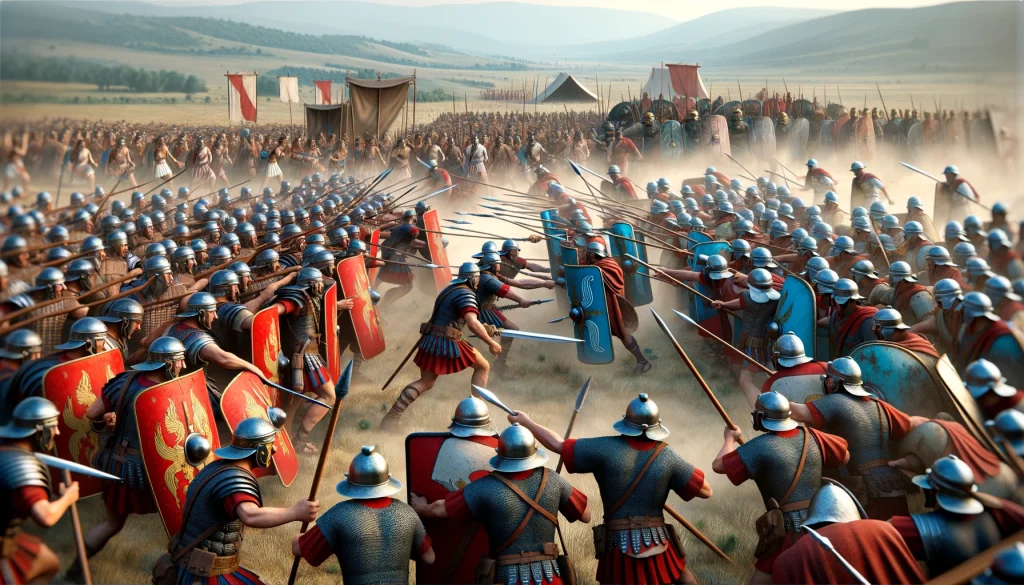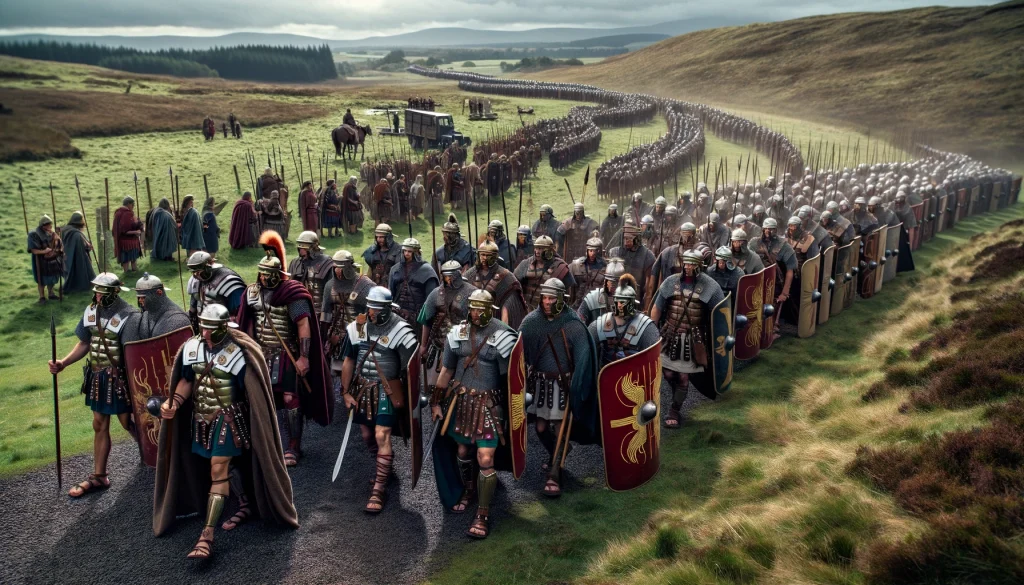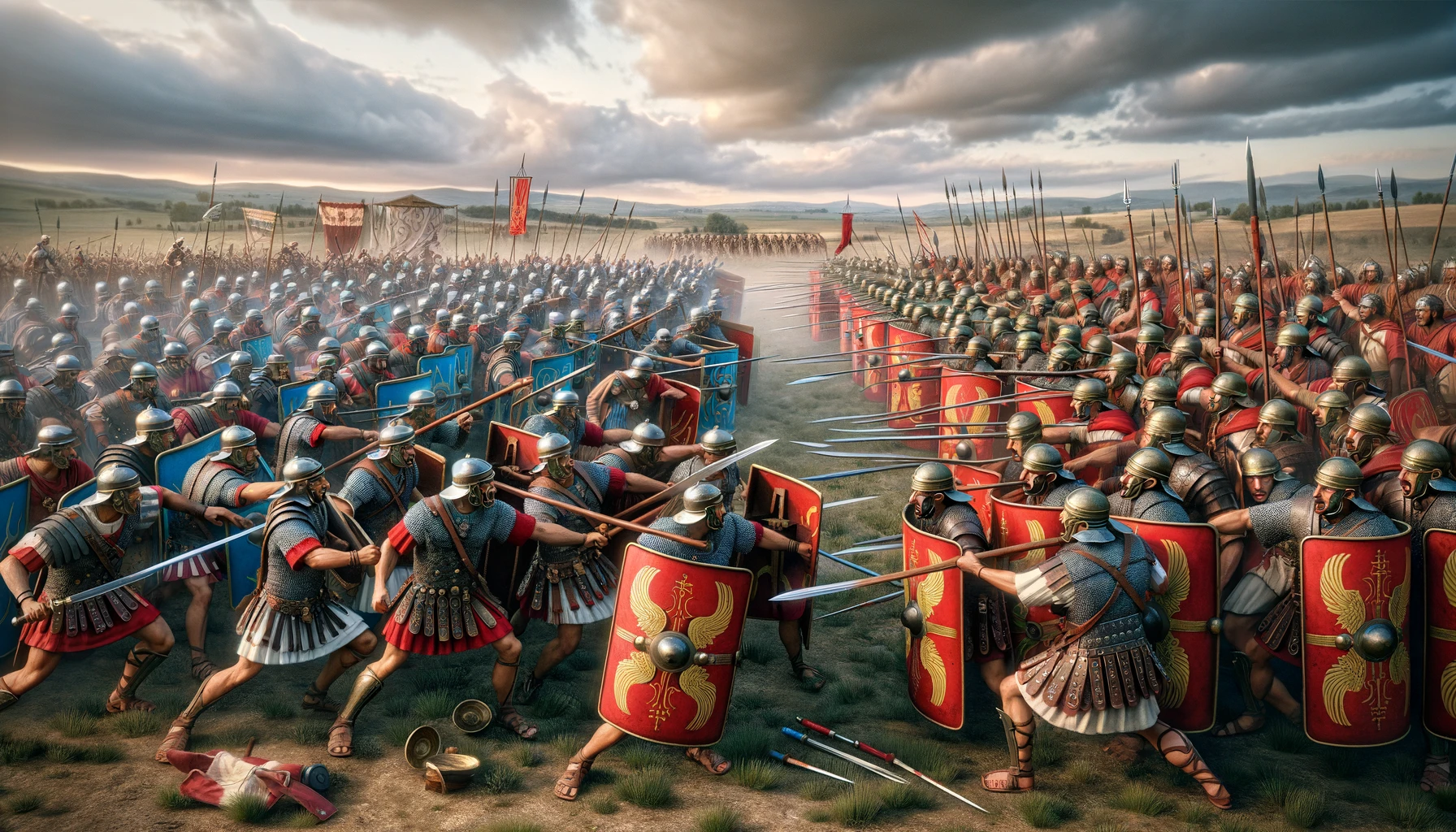Roman Civil War

The passing of Emperor Commodus triggered a chain of events that culminated in a civil war. After Pertinax’s brief tenure, multiple contenders for the throne surfaced, notably Septimius Severus and Clodius Albinus. Albinus, then governor of Britannia, had gained the favour of the locals after quelling their revolts; his command of three legions positioned him as a formidable candidate. Severus, initially competing with Albinus, offered him the position of Caesar to secure his alliance against Pescennius Niger in Asia. Following Niger’s defeat, Severus declared himself Emperor in 193 and turned against Albinus, who likely anticipated becoming Severus’s next target and began war preparations.
In 195, Albinus advanced into Gaul, finding support there, and established his base in Lugdunum. Severus’s arrival in February 196 led to a pivotal battle. Albinus nearly triumphed, but Severus’s additional forces tipped the scales, resulting in Albinus’s suicide. Severus then eliminated Albinus’s allies and possibly seized extensive lands in Britain as retribution. Albinus’s case underscored the dilemma of Roman Britain: three legions were necessary for security, yet this concentration of military power created an opportunity for potential usurpers. Redeploying these forces would leave Britain vulnerable to revolts and invasions by Picts and Scots.
Northern Britain During the Civil War
Historically, it’s believed that northern Britain fell into disarray during Albinus’s absence. The newly appointed Governor, Virius Lupus, had to negotiate peace with the rebellious Maeatae tribe. The appointment of governors with military credentials thereafter suggests that Rome faced formidable opponents. In 207, Lucius Alfenus Senecio’s plea to Rome portrayed the barbarians as insurgent, looting, and wreaking havoc, indicating they did not view themselves as Roman subjects. Senecio sought reinforcements or an imperial intervention. Severus, despite his age, opted for intervention. Archaeological records indicate Senecio was fortifying Hadrian’s Wall and its forts, and Severus’s presence in Britain prompted peace negotiations from the tribes. Severus, intent on a military success and eager to expose his sons Caracalla and Geta to the task of subduing a hostile territory, did not yield easily.
Severus’ Caledonian Campaign (208–211AD)

Between 208 and 211, Severus spearheaded a campaign into Caledonia with around 20,000 troops, enduring guerrilla warfare and harsh landscapes. His forces reached the River Tay but achieved little; peace agreements with the Caledonians followed. Severus then returned to York, re-establishing Hadrian’s Wall as the frontier and taking on the title Britannicus, though it bore little significance to the unyielded north. Subsequent uprisings by the Maeatae led to Caracalla’s punitive campaign.
Severus’ Death
Severus’ military efforts were abruptly halted due to illness. He retreated to Eboracum (now York) where he passed away in 211. Caracalla, Severus’ son had been proclaimed co-ruler by his father in 198 and became the joint emperor with his brother Geta, upon the death of their father. His son Caracalla carried on the campaign briefly the next year but quickly opted for a peaceful resolution. Subsequently, Roman forces ceased deep expeditions into Caledonia. Not long after, the boundary was permanently reestablished at Hadrian’s Wall to the south.
Caracella Divides Britain

Caracella divides Britain into Britannia Superior and Britannia Inferior to mitigate the threat of powerful, insurgent governors, a solution that endured for nearly a century. Britannia Superior in the south had a consular governor based at London with two legions, the Twentieth at Chester and the Second at Caerleon; Britannia Inferior in the north had a praetorian governor with only one legion, the Sixth at York, where the governor also resided.
Limited historical records describe the ensuing years as the Long Peace, but the increase in buried treasures suggests persistent unrest. Forts constructed along the southern British coast over the next century aimed to curb piracy, evolving into the network known as the Saxon Shore Forts.

